Lion King II: Simba’s Pride – Special Edition
by Ben | August 20, 2004 7:48 am
DisneyToon Studios (October 27 1998), Walt Disney Home Entertainment (August 31 2004), 2 discs, 81 mins plus supplements, 1.66:1 anamorphic widescreen, Dolby Digital 5.1 and DTS Surround, Rated G, Retail: $29.99
Storyboard:
Set once again in the plains of the African savannah, Lion King II opens pretty much where the first film left off: with the birth of Simba and Nala’s baby cub. Timon and Pumbaa, eager to remain part of the family, take it upon themselves to act as the cub’s babysitters, something they think will be fun until Rafiki reveals that it’s a girl, Kiara, they’ll be keeping an eye on. Somewhat dismayed, the pair treat her with kid-gloves, making sure that she keeps out of trouble. But Kiara turns out to be just as mischievous as young Simba was, and ventures out into the Elephant Graveyard for adventure. Once there, she meets Kovu, a young cub from a dissident group of lions who still look up to Scar, Simba’s evil uncle from the original. Seems his mate Zira is looking to groom Kovu as a replacement for Simba, allowing for a triumphant return to the Pride Lands in Scar’s name. But Kovu is falling in love, trying to hide his roots from Kiara – all the time knowing that he must follow his destiny, while also trying to follow his heart…
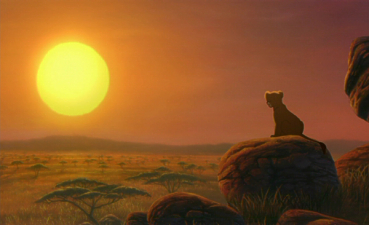
The Sweatbox Review:
The Lion King II has a lot to answer for. Disney had pioneered the “video premiere” market prior to the return of Simba and company with the first such officially released title, a sequel of sorts to Aladdin, The Return Of Jafar, which was merely the first few episodes of the spin-off television show strung together and slapped out as a “movie” (with all the inherent sub-standard TV animation to boot). In fact, Jafar, while seen as the first in this line, only really followed what Walt had been doing for years on the DisneyLand TV show (animating new sequences to bridge cartoon compilations) and that the company itself had been doing all through the 80s (remember the likes of Goin’ Quackers, Sport Goofy and various Mickey-themed collections?) on home video.
There were several other titles put out around Jafar’s release too: “movie” outings for the Gargoyles and the Mighty Ducks – all Disney TV releases – flooded the market, providing filler for the home video crowd before a given show began its television run. Into this fray stepped The Lion King II: Simba’s Pride, which can now really be seen as the true launch of the direct-to-video premieres. This was no TV show, or string of shoddy episode groupings (leave that to Timon And Pumbaa’s spin off). Instead, Disney set up a studio especially to create it, and it was planned and animated in the style of the original film – then the biggest grossing animated film of all time – and with a singular storyline in place of a generally episodic, compilation nature.
The idea behind Simba’s Pride was to craft a sequel, Aladdin-style and on a much lower budget, though as close to feature film quality as these constraints would allow. Characters had been designed, the story set up and voices cast from the previous film, meaning a much less production lead time and cost (the actors would return for scale too, seeing that this was not going to be as “big” a movie). The result was a film that surprised many, not least in the amount of home video units the title shifted, which crept into numbers usually reserved for theatrical releases. Simba’s Pride became one of the first Limited Issue Disney titles put out on DVD, standing next to such classics as Peter Pan, 101 Dalmatians, Pinocchio and the then-recent Mulan, outselling most and cementing the Lion King brand as a major Disney franchise.
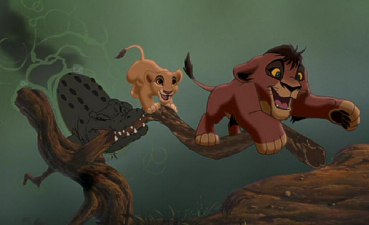
Not only was Simba’s Pride one of the earliest DVD features that helped establish the format, but it also unleashed the idea of more direct-to-video sequels. While no one was particularly against the studio creating follow-ups to its recent theatrical hits (after all, what studio nowadays doesn’t?), fans were against announcements for films that would sequalize many of those original Limited Issue titles. In the following years, the catalog of home video sequels has gotten to a ridiculous point, with many Disney die-hards re-branding them as “cheapquels” – low-budget, low-aspiration attempts to simply cash in. While that underlying fact may be true (and Disney IS diluting their own product, like it or not), some of these little films do stand up, and are still the work of many talented artists who have to strive for decent quality under the tighter than tight conditions.
Though the titles that come directly from Walt Disney Television Animation are pretty risible and barely conceal the attempts to hang three or four episodes on a bookended storyline, the recently re-named DisneyToon Studios, based in Australia, is becoming better and better at churning out the goods. Originally two studios, with a satellite based in Canada, the Canadian studio was shut down during production of Return To Never-Land, with the remainder of that film, and subsequent DTVs created down under. However, setting up this practice, and one of the few films to actually be completed in Canada, was Lion King II: Simba’s Pride. Though not made directly by the original artists, Simba’s Pride was created with the big screen in mind, being framed for widescreen and even getting limited theatrical releases in select cities and some international countries. So, looking back on it these few years on, how does it compare?
Pretty well, actually, though if the story sounds strangely familiar, it’s that, in the end – and as with many of the recent DTV offerings – the story is merely the child of the original protagonist in a reversal of the original storyline, and little more. However, and as such, the film just about holds up under that thin premise. There is an unwritten “rule” than the Lion King films all follow Shakespearian themes, with the 1994 original loosely following the plot and events of Hamlet, and the recent Lion King 1½ being Timon and Pumbaa’s take on Rosencratz And Guilderstern Are Dead. If this is so, then there’s an argument that Simba’s Pride is Romeo And Juliet dressed up in lion’s clothing, the plot of two young lovers from opposing families somewhat backing this up, though obviously without the tortuous affair and death!
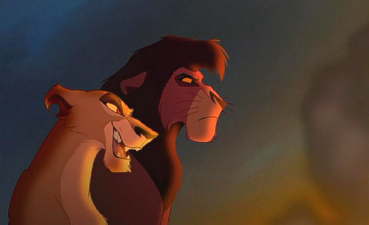
Of course, that may be hyping up a little too much, for Lion King II isn’t as layered as either the original or even the Timon and Pumbaa re-match, being much more workmanlike and plodding in its structure (plus there’s that excruciatingly bad lift of the final “thwack” from the original film’s Circle Of Life to hit on the main title – something I was hoping they’d fixed here). This rather lack-lustre approach extends somewhat to other areas of the film too, with performances being fine but not outstanding, despite the return of most of the cast (though as with all other Lion King projects, Zazu’s Rowan Atkinson fails to show up once more, meaning that Timon and Pumbaa get more stage space). Perhaps it’s something in the voice direction, but there doesn’t seem to be the immediacy that the original readings brought to the script, which covers all bases without providing any stand-out moments of its own.
Sounding much more mature is Matthew Broderick’s Simba, though this could be simply because his role now is protective parent, and though he often seems like the playful but serious Simba we know from the original, his spoken lines are pretty lightweight, being explanatory in the extreme (though again, I guess this is Kiara’s story). Joining the pride are newcomers Neve Campbell as the grown up Kiara (sung by Liz Callaway – Jasmine’s singing voice in the Aladdin sequels as well as singing stand-in for Meg Ryan on Anastasia), Andy Dick, who being as annoying as the Nuku character is in the film, suits just perfectly, and Jason Marsden as Kovu, a long-time animated vocalist who here puts his all into the role, but comes off sounding a little “forced” in the big dramatic moments. Marking a return to the Disney fold is Suzanne Pleshette, star with Dean Jones in a number of classic live-action comedies for the studio, and here playing against type as Zira, the villainess of the piece, quickly putting those previous outings out of mind with her wicked take on the character.
Nathan Lane and Ernie Sabella turn up and run off their lines with customary vigor (providing the better half of the laughs through their performances alone), while I’m not sure why James Earl Jones was needed: his Mufasa’s lines are severely limited, being not much more than grabs from the original. Rounding out the cast is Robert Guillaume, who here seems to have lost his hold on Rafiki and plays him straight as an old fool rather than the mystical eccentric that we loved in the first film. The slightly “off” nature of the film continues throughout the rest of the soundtrack, never really becoming truly enveloping. The savannah doesn’t have the richness of sound that the first had, with ambience sounding a little like an afterthought rather than the full, surrounding sound of Africa that The Lion King suggested and achieved.
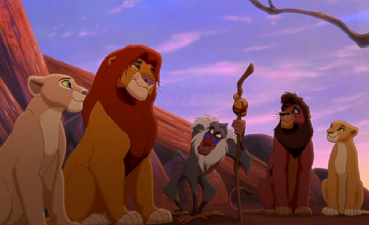
The songs are also a mixed bag. Very often, it’s easy to write a nice-sounding theme and run off a half-decent song that will please fans and fill the gap needed, and the video sequels have a habit of doing this, so long as they sound typically “Disney”. It’s not unusual for melodies and lyrics in the bigger films to go through multiple re-writes, more re-writes and re-writes again until the perfect blend is reached, something that these films seem to lack, however finely produced they may sound. The opener, He Lives In You, comes straight from the theatrical stage show, and is a belter in that production, coming in the middle of the story. Using it here (as sung by original Lion King contributor Lebo M) is a corking set up, though it doesn’t help that the similarity to the Circle Of Life sequence kicks things off with comparisons in mind. Disappointingly, Tina Turner’s rendition of the track, played over the closing credits of the European version, lent the film another layer of star billing and power that seems missing here (but see below for a pleasant surprise).
Of the other songs, Simba’s We Are One (putting into verse what Mufasa explained to Simba in part one) and Love Will Find A Way are pleasant enough, even if they are not Disney classics. I couldn’t shake the feeling that, for some reason, We Are One (performed by, among others, LadySmith Black Mambazo, who gained a reputation following their work on Paul Simon’s Graceland album) has a very Irish jaunty touch about it, but maybe that’s just me! Zira’s Be Prepared knock-off My Lullaby comes off worse, due to an empty production and trite lyrics (co-written by Buffy The Vampire Slayer and Titan AE screenwriter Joss Whedon) and Upendi feels like a way too obvious filler for Hakuna Matata, being a very laid back Jamaican tune that doesn’t fit in well with the momentum of the film at where it has been placed.
The same criticism could be levelled at Love Will Find A Way, a song that says the same things as If I Never Knew You from Pocahontas and is placed in about the same spot as that song was intended, the difference being that those characters really did build up a relationship in the film as opposed to the love-struck teenagers here who warble along just as the climax is cranking up and ready to roll. Admittedly, the song is among the best of the bunch, or is that just because it seems so familiar, as if it had been cobbled together from various other, similar themes? Nick Glennie-Smith’s “new agey” score plays along inoffensively throughout, but none of the musical contributions match the tight John/Rice/Zimmer team from the first film with a result that feels like a high-school production trying to mount the same heights as its predecessor, and a more “cod-African” style than even the first film.

Likewise the animation feels a little skimped on in places. There is some fine stuff in here to be sure (usually when fast action dictates full 24 frame movement), and it’s absolutely a step up from the low-quality episodic nature of the previous DTV titles such as the Aladdin sequels. Simba’s Pride, again as with most of the work that came from the Canadian studio and now Australia’s Toon Studios, finds a comfortable “middle-ground”, being a vast improvement over TV fare, but not quite as in the same league as Feature Animation. What doesn’t help is that the film is following one of the most well animated and detailed features from Disney, namely the original Lion King, which had such a deep, warmer look due to the emerging CGI capabilities to add in background detail and character tones (lighting and shading).
Lion King II attempts such niceties, but there is a noticeably much “rougher” quality about it. Character faces don’t have any of the subtleties that peppered the original film, and some shots are striking for all the wrong reasons, as background cast members who remain static and devoid of all life, and some close ups that appear ham fisted and awkward. The drawing is mostly all carried out on twos, with thicker character lines for the most part, even though they are individually colored and lip-sync is mostly better than expected. Designs are fairly bland, with Kiara not that different looking from young Nala in the first, and there’s also a very predictable take on the villains too, them being more mangy and baggy-eyed than their “well off” Pride Land counterparts. Despite what can only have been a heartfelt attempt to create a lasting sequel to one of Disney’s most popular films, I never really quite worked out why the studio didn’t go all out and produce a fully-fledged sequel to The Lion King. Could it be that, although they had previously released a theatrical follow-up (and counted in the main canon of “classics”), The Rescuers Down Under, that Studio execs really knew in their heart of hearts that Disney is all about telling new stories, or new twists on traditional themes?
It seemed to me, watching Simba’s Pride again after seeing it on its original 1998 release, that there isn’t a lot to get worked up about. The film plays through without much incident, not being terribly exciting or grand, though there are moments when things gel and a deeper, more layered story peeks through. There are some nice things that further suggest this, especially the new names: Kovu is highly appropriate, being Swahili for Scar, while Zira means “hate” and Nuku represents a “bad smell”. However, on the flip side, Vitani’s character name, at one point Shetani, meaning “devil” in Kiswahili, was changed for something less offensive and it’s this dumbing down to kid audiences that really doesn’t help the film raise its game.
As is normal for an animated film, a large team of screenwriters get on-screen credit, but could it be this time around that it was being stretched in too many directions, trying to be its own film, while staying too closely tied to the original? Sometimes overwhelming success can overshadow any attempts to live up to it, and that seems to be the underlying difficulty here, as the resulting film isn’t anywhere near bold enough as it should be to carry it off (unlike Lion King 1½, which succeeded simply by going totally off in the other direction). Some plot points disappear into holes too, such as what happened to Simba’s mother – are we to assume she has now joined Mufasa in the stars in the sky?

Certainly, the choices of Darrell Rooney and Rob LaDuca as co-directors seems odd, the pair having not really been involved in anything other than a clutch of television specials up until this point. Both would go on to helm other DTVs (LaDuca on DreamWorks’ abysmal Joseph: King Of Dreams) and Rooney did actually build on what he obviously learnt here with the charming Lady And The Tramp II: Scamp’s Adventure. As with fellow-sequel trainee director Kevin Lima, it would be interesting to see him handle a first-run, newly plotted feature.
While not as majestic as the original, nor as funny as the “side-quel” take on events, the marketing will have those who enjoyed both films “completing their circle of life” and adding Simba’s Pride to their collections. To be fair, it stands up against an impossible to top original pretty well, though admits defeat to the law of diminishing returns, at least artistically. With nothing too outstanding to shout about, nor anything too objectionable to warrant complaint, The Lion King II: Simba’s Pride is about on par with the better of the recent DTVs and plains ahead of the worst of that bunch, being worthy of a look. It nudges its score just over a mark from six to seven for being a reasonable length, rather than the one-hour TV-friendly running time the recent DTVs have come in at.
Is This Thing Loaded?
Another in Disney’s DTV line to get the 2-disc treatment, I was looking forward to a decent amount of material and some goodies that I was sure had to turn up in the package (see below). Unfortunately, it’s all pretty skimpy, especially on materials based around the movie itself, and I found nothing to really get my teeth into, being a collection of bonus material that, with the exception of one multiple-thread activity, could have filled a single disc perfectly well.
Though the feature was introduced recently, this disc does not include the new FastPlay option to play the disc right through (possibly as it’s a 2-disc set?), but before the Main Menu kicks in, we get a usual selection of (skipable) previews. Coming soon on this title are Aladdin: Special Edition, Pooh’s Heffalump Movie (which, apart from the thick black outline TV-quality animation, looks fairly fun), Mickey’s Twice Upon A Christmas (which, with its scary looking CGI effects and bad timing doesn’t look like a lot of festive fun at all). Via the Sneak Peek menu, additional trailers are featured for the Mulan Special Edition, Home On The Range, Disney Princesses and a thirty-second promo for The Lion King on Broadway.

Features on Disc One are limited to just playing the film with the song lyrics on-screen, or with a Trivia Track, Lion King’s Matter Of Facts, which pops up information about Africa and the film. I have to admit, I didn’t get very far, and it’s another kid-oriented feature, with such nuggets as “Simba means lion in Swahili, Rafiki means friend, Nala does not mean anything, but it sounds pretty”. One thing I noticed when the trivia track was selected was a default to a “hidden” English-language track, encoded as Dolby 2.0 Stereo. This got me to playing with the audio options and lo and behold – the Tina Turner version of He Lives In You is present and correct on the French-language track, replacing the end credit score music with a much more powerful version of the song, and which was featured on European editions. A very cool find, these credits also supplant the rather drab Love Will Find A Way with a much more bouncy version of Upendi, ending the film on much more of a powerful and upbeat note!
Disc Two is where the chunk of the extras reside, with a really fake looking waterfall background menu (other menus are static, none-scored affairs)! Possibly the biggest feature – and reason alone for many die-hard Disney fans to pick up the disc – is the inclusion of the One By One animated short. As with last year’s Destino and the recent Lorenzo, One By One was intended as one part of a larger project, once mooted as a third Fantasia, but that then changed into being something more original, with new music accompanying the visuals. Scored by The Lion King’s Lebo M (actually taken, as with Turner’s performance of He Lives In You, from the Rhythm Of The Pride Lands “soundtrack sequel” to The Lion King), and produced by that film’s Don Hahn, One By One is finally seeing a release now that Roy Disney’s leaving the Studio has meant the certain cancellation of that new “Music Project”.

Though early reports had Hahn listed as the director of the short, it has actually been helmed by Pixote Hunt and David A Bossert, who both contributed to Fantasia/2000 (Bossert is also a long serving producer of the extras for the Walt Disney Treasures line). The world premiere of the short, you’ll be pleased to known that One By One is presented just as it should be, complete and intact in a digital 1.66:1 anamorphic widescreen transfer, Dolby Digital Surround and maximum bitrate. The five and a half minute film follows the travels, Forrest Gump-style, of a single brightly coloured feather as it floats and comes to rest in the hands of a young African boy, whose impression of a newspaper blown up against the remains of a wire fence give him and his friends the idea for some very colourful kites. What’s immediately striking about this new film is the quality of animation, by Feature Animation and featuring what are certainly Deep Canvas techniques, light years ahead of this disc’s main feature and easily of the level that the other recent Fantasia segments have been.
The lack of a main title (it comes at the end) and Foley sound effects also indicates that this was intended as sequence for an instrumentally scored picture, but this is frankly all for the good, as it means we can appreciate more the perfect blend between the clean soundtrack and absolutely beautiful artwork. With an infectious youthful spirit and buckets of gentle fun, the short is one of the best gems to come from the Studio in recent years, and it’s somewhat of a shame that it has been lumped directly to a home video release when it deserves so much more (such as an Oscar nomination). The 2D, traditionally drawn animation literally sparkles, and is the richest looking I have seen from Disney in a long while. Never outstaying its welcome, One By One is a pure delight, with amazingly animated details, and is eminently re-watchable.
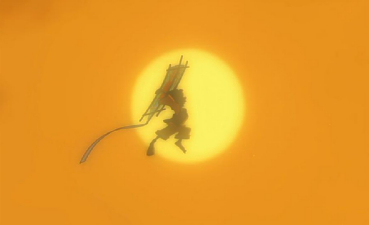
While not containing much replay value, Heather Headley – spectacular as Nala in the Broadway production of The Lion King and as the title character in Disney’s Aida stage musical – sings with Kenny Lattimore on the closing credit “pop version” of the ballad duet, here included as a Love Will Find A Way music video clip. Shown in original 4:3 full-frame, it’s a pretty standard and generic promo for a pretty standard and generic song. Headley has an amazingly powerful voice, though the song doesn’t really do it justice, never rising above the tame chorus and sounding pretty drab. Lattimore is hysterical trying to give off his sultry looks and the fact that the pedestrian lyrics don’t introduce anything new doesn’t help the bore factor. A much better choice would have been a clip for Tina Turner’s He Lives In You, though that this lasts four and a half minutes is better than the usual 30-second promo for whatever soundtrack Disney wants to push.
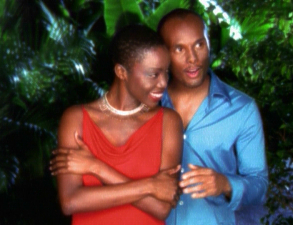
Moving into Games And Activities, and the big marketing focus has been on Timon And Pumbaa’s Virtual Safari 2.0, a continuation of the duo-led interactive journeys that featured on The Lion King and The Lion King 1½. While I am impressed with the level of work that has gone into these features, it’s a case of “here we go again” this third time around, and the joke is a little stale. The multiple paths the characters can take are as remarkable as before, though quite how many times viewers will want to relive these things is a mystery, since there are no real challenges to be had and it’s mostly a case of simply choosing left or right. It felt as if there were less selections than usual, and the same clips played quite a few times, whichever direction was taken, lending this edition a rather cutback feel.

Backgrounds are by turn visually interesting and obviously bitmappy, and some scenes are a little too “out there” for their own good, but I’ll admit that the trip to space, with its 2001 parodies and an appearance by a certain extra-terrestrial Disney character, did have me cracked up and were brilliantly played. However, an idea that seemed novel last year is wearing more than a little thin and, especially now that there are three of them, it all feels just like “more of the same”. Plus, the CGI animals here are just plain creepy!

Pride Land Games continues the CGI-based interactivity, and is basically a number counting game, with a puzzle twist at the end, which doesn’t offer any kind of reward, while Rafiki’s Challenge is a “look and search” diversion. I can see that the dark blue-on-dark blue arrows used here could be a little hard to see for some players, but the artwork manipulation is pretty good. Robert Guillaume and Ernie Sabella return as Rafiki and Pumbaa, but it should be noted that Nathan Lane’s Timon is voiced by a sound-alike for all the games (the Safari included) – not too bad as it goes, but not quite right, and I was surprised that the warthog wasn’t given more lines, considering.
Heading into Backstage Disney and one realises that we’re nearing the end of the bonuses – yes, it’s that stretched. Find Out Why is a series of questions answered by Timon and Pumbaa, using new footage sponsored by the National Science Foundation. Well animated – and using a variety of styles and mixed media – these funny clips (running around 90 seconds each for a 7:30 total) build on the scene in which Timon explains the mystery of stars (“fireflies stuck all over that big darkish blue thing”) from the first film. Here, he gives similar, wacky answers to questions such as why we sneeze, why there is thunder and lightning, why there is wind, and why an airplane flies, while Pumbaa – as usual – displays slightly more logical and scientific reasoning. Good shorts, with Sabella and Lane back as the characters, and a reminder of the 1980s educational films that Disney produced, showing that they can easily help kids understand a subject, even when those kids think they’re being entertained!

The Timon sound-alike is back again with Sabella to narrate Lots About Lions, an information-based clip that features three minutes of stock wildlife footage and the ubiquitous pair reeling off facts and gags about the big cats. Finally, Proud Of Simba’s Pride is a token “making of” EPK featurette that runs a barely minimum seven minutes. It covers all the bases in rudimentary fashion, with soundbites from director Rooney, who tries to explain the emotional roots, and the cast. With all the gushing go on (Suzanne Pleshette describes the film as “wonderful…I loved it”, while the rather annoying Jason Marsden agrees, saying “I love it, love it, love it”) you’d wonder if they’d actually SEEN Simba’s Pride at the time their remarks were made. Certainly they’re all captured at the time of recording their lines, so their comments are all based on what they think the movie will turn out like. The funniest part is seeing executive Sharon Morrill trying to justify the project: “The Lion King is probably the most successful animated feature of all time, and we felt that in order to satisfy our audience’s craving for more and to have them be able to spend more time with the characters, we created a sequel for them”. Nice…thanks for that.

All in all, this isn’t a bad little package, but one that is extremely lightweight on the really meaty goods. Of all the Lion King releases, I would have expected one of them to carry Steve Moore’s hilarious 1995 Timon And Pumbaa short Stand By Me, which has the duo singing Ben E. King’s classic song, and it should have been this one. Alas, nothing of that nature to find here, and further adding to the grief is that several intriguing deleted scenes from Simba’s Pride which are known to exist and have in fact shown up online in storyboard and pencil test form before now are no-where to be seen. Why these were not added to the package is beyond me: it would have absolutely beefed up the set and backed up the film, since they would have been a more than viable document of production, and did include some very interesting changes. There was also a European theatrical trailer, which was on the previous release and might have given even more, theatrical-level validity to the project, but that too has failed to show. A real shame and a very missed opportunity on all counts.
Case Study:
Coming with a foldout slipcover over a standard slimline double keepcase, Lion King II (or “2” as it has been inappropriately renamed here) will match the two previously released titles in the “trilogy” on your shelf. The fold-out contains a peek at the “hours” of bonus footage to be found on the discs themselves, while a DVD Guide provides a chapter insert, some odd hard-sell production notes, and a look at the contents on each disc, which does the business in routine but welcome fashion. The back page also helpfully suggests that you “complete your collection” before all the Lion King films disappear back into the vault, no doubt to reappear as soon as HD kicks in (there’s also a three-movie box set coming out this fall). Finally, a savings voucher booklet also features advertisements for both upcoming Mulan releases, Home On The Range, and the atrocious-looking Twice Upon A Christmas.
Ink And Paint:
Another direct-digital transfer from Disney and it looks great, with a rock steady image that bizarrely only showed signs of slight gate weave on the end credits. Building on the sharpness of image from the original Limited Issue release, which itself was no slouch, this new edition is probably worth the upgrade for fans simply for the introduction of anamorphic enhancement. Presented, as with the last edition, in the correct negative aspect ratio of 1.66:1, framing looks fine, with bold images that match previous Lion King incarnations on disc. As with the other two films, the color palette is very much based in rich reds, which can be a real headache for video rendering. Nothing to worry about here, since everything is kept at reasonable levels and the color never bleeds or becomes over saturated. Dark blues – the kind of shade only Disney can seem to find the right combination of – look fantastic and are among the only moments that the film really invites one in.
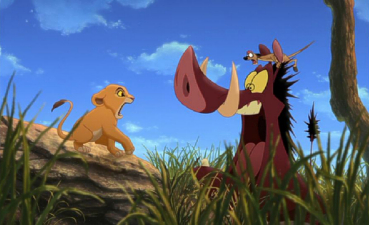
Scratch Tracks:
As is the norm with Disney DTV titles, we’re presented with both standard Dolby 5.1 surround and pumped up DTS track. Not very much to gauge from this time around, with both sounding generally the same, and no-where near as full as The Lion King’s Enhanced Home Theater mix or even the enjoyable feature-quality track that Lion King 1½ sported. My complaints with the actual soundtrack’s richness are noted above, though what is here is presented as intended. Vocals are clear, music is clean and the surrounds get a little workout from the score as and when it kicks in. Nothing exemplary, much like the film, but perfectly adequate nonetheless. French and Spanish 5.1 dubbed tracks are also included, as well as the handy THX Optimizer and the “hidden” alternative 2.0 English surround track mentioned above.
Final Cut:
The final release in the run of Lion King discs, I’ve a feeling that Simba’s Pride has had to wait until last for the simple fact that releasing it prior to Lion King 1½’s release could have had an impact on sale of that title. Simba’s Pride is an adequate entry into the series, but one that seems a little redundant these few years on, and could have easily put purchasers off the very funny Timon and Pumbaa take on the original. A good deal of work went into the production, and no doubt that fans will get a lot out of it, but casual viewers may experience extreme déjà vu in the plot and older siblings and parents may find sitting through it multiple times may not be as rewarding as the original or the other, spoofing sequel. The disc is a pretty kid-oriented affair, being mostly centered on games and fun educational featurettes rather than anything meaty on the film itself.
A commentary wouldn’t have gone amiss and those deleted scenes being a no-show is an exceptional case of dropping the ball, as is the lack of the hysterical Stand By Me short, which would have provided more than enough laughs to cheer up the adults. A just about okay package for an okay film, it’s interesting to note that the European edition simply drops the Virtual Safari and fits everything neatly onto one disc. Padded you say? Definitely, but though Lion King II: Simba’s Pride has nothing of the roar of the original, it’s still a moderately entertaining re-tread that should just about please those who can’t get enough and need another fix of their animated lions. The included One By One short, on the other hand, is an expert combination of traditional character and computer-enhanced background animation that we usually expect from Disney, and could surely make the package worthy of purchase alone for long-time dedicated fans. In fact, One By One on its own just manages to bring the overall disc mark up to an eight – it’s pretty charged stuff!
 | ||
 [1] [1] |
- [Image]: http://www.amazon.com/Lion-King-Simbas-2-Disc-Special/dp/B0001I55W4?tag2=animatedviews-20
Source URL: https://animatedviews.com/2004/lion-king-ii-simba%e2%80%99s-pride-%e2%80%93-special-edition/